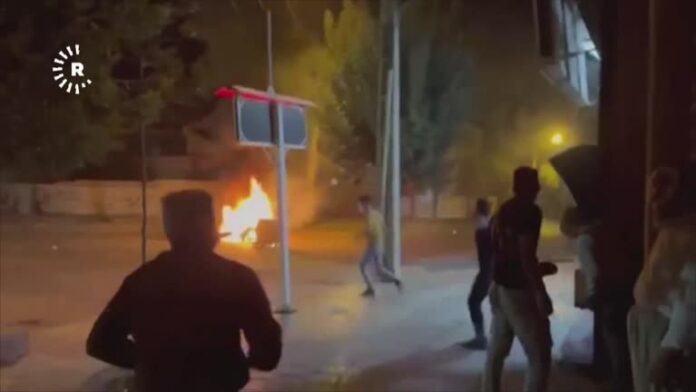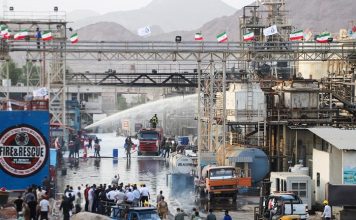DUBAI, Sept 22 (Reuters) – Protesters in Tehran and other Iranian cities torched police stations and vehicles on Thursday as unrest triggered by the death of a woman detained by the morality police intensified, with reports of security forces coming under attack.
Mahsa Amini, 22, died last week after being arrested in Tehran for wearing “unsuitable attire”. She fell into a coma while in detention. The authorities have said they would launch an investigation into the cause of her death.
Iranians are so frustrated, their anger is exploding in the streets. The international community needs to support them in determining their own future. pic.twitter.com/cjYOU4HTcG
— Masih Alinejad ?️ (@AlinejadMasih) September 21, 2022
Wow. Just wow.
Protesters beat back regime forces in Amol, #Iran.#IranProtests #MahsaAmini #مهساامینی #مهسا_امینی pic.twitter.com/plGbOTj2HR— Alireza Nader علیرضا نادر (@AlirezaNader) September 21, 2022
The incident unleashed huge anger in the population and the worst protests in the Islamic Republic since 2019. Most have been concentrated in Iran‘s Kurdish-populated northwest but have spread to the capital and at least 50 cities and towns nationwide, with police using force to disperse protesters.
A member of an Iranian pro-government paramilitary organisation, the Basij, was stabbed to death in the northeastern city of Mashhad on Wednesday, two semi-official Iranian news agencies reported on Thursday.
The Tasnim and Fars news agencies reports of the stabbing appeared on Telegram as both their websites were out of reach. There was no official confirmation of the death.
Tasnim also said another member of the Basij was killed on Wednesday in the city of Qazvin as a result of a gunshot wound inflicted by “rioters and gangs”, bringing the total reported number of security force members killed in the unrest to four.
In the northeast, protesters shouted “We will die, we will die but we’ll get Iran back” near a police station which was set on fire, a video posted on Twitter account 1500tasvir showed. The 1500tasvir account focuses on Iran protests and has around 100,000 followers.
Reuters could not verify the footage.
Another police station was set ablaze in Tehran as the unrest spread from Kurdistan, the home province of Amini.
Amini’s death has rekindled fury across the Islamic Republic over issues including restrictions on personal freedoms – including strict dress codes for women – and an economy reeling from sanctions.
Iran‘s clerical rulers fear a revival of the 2019 protests that erupted over gasoline price rises, the bloodiest in the Islamic Republic’s history. Reuters reported 1,500 were killed.
Protesters this week also expressed anger at Supreme Leader Ayatollah Ali Khamenei. “Mojtaba, may you die and not become Supreme Leader,” a crowd was seen chanting in Tehran, referring to Khamenei’s son, who some believe could succeed his father at the top of Iran‘s political establishment.
Regime headquarters in Gharchak falls to the #Iranian people.
“You’ve tortured us for 40 years, this is what you get!”#IranProtests2022 #IranProtests #MahsaAmini #مهساامینی #مهسا_ایمنی pic.twitter.com/mqMZLwFVm5— Alireza Nader علیرضا نادر (@AlirezaNader) September 22, 2022
Reuters could not verify the video.
Reports by Kurdish rights group Hengaw, which Reuters could not verify, said the death toll in Kurdish areas had climbed to 12 as of Wednesday. Iranian officials have denied that security forces have killed protesters, suggesting they may have been shot by armed dissidents.
With no sign of the protests easing, authorities restricted access to the internet, according to accounts from Hengaw, residents, and internet shutdown observatory NetBlocks.
Women have played a prominent role in the protests, waving and burning their veils, with some cutting their hair in public.
In northern Iran, crowds armed with batons and rocks attacked two members of the security forces on a motorbike as a crowd cheered, as seen on a video, which Reuters was unable to verify.
(Reporting by Dubai bureau; Writing by Michael Georgy; Editing by Raissa Kasolowsky and Mark Heinrich)








